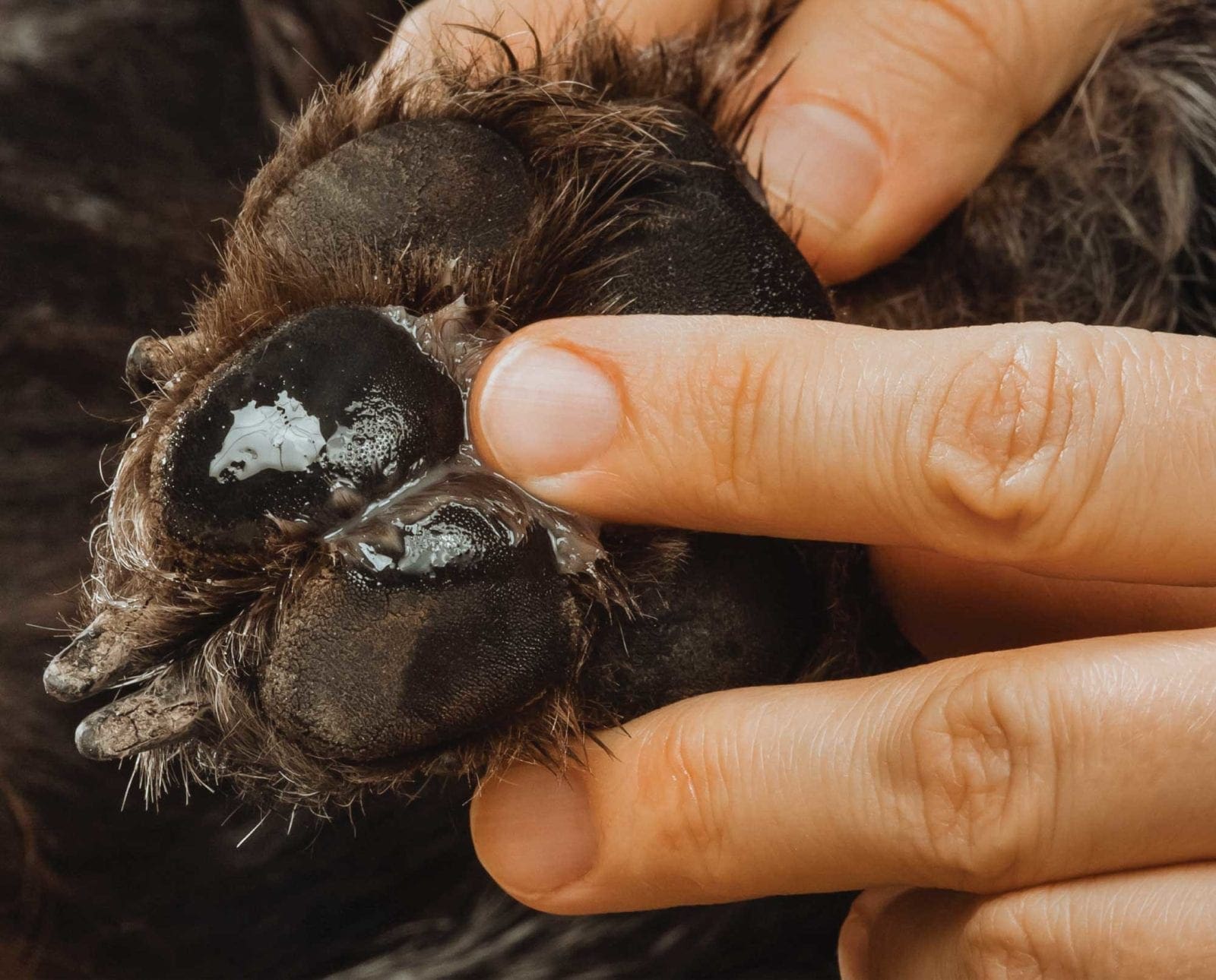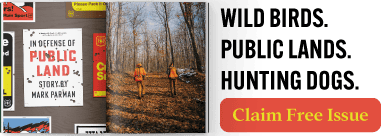Home » Hunting Dogs » Essential Medical Supplies for Your Dog’s First Aid Kit
Essential Medical Supplies for Your Dog’s First Aid Kit

Dr. Gracey Welsh is a small animal veterinarian. She splits…
A veterinarian recommends which supplies should be in your dog’s first aid kit
Veterinary advice in this article will help educate and prepare you, but should never substitute for a veterinary examination. If you are concerned about your dog’s health and safety, contact your veterinarian. This article explains which supplies should be in a first aid kit for dogs.
Every dog owner should have a field first aid kit. You never know what your dog may encounter while bird hunting, training, or just being outside. It’s always a good idea to build a packable first aid kit for your dog that’s easy to stick in the truck and full of useful medical supplies. However, knowing which first aid supplies to prioritize in your dog’s kit can be a little confusing.
Bird dog owners frequently ask me about what kinds of medical supplies should be in their dog’s first aid kit. With all the obstacles dog owners face in the field can be as common as barbed wire, as challenging as a porcupine, or as obscure as a beaver. Here are my recommendations for the types of medical supplies every dog owner should keep handy in their dog’s first aid kit:
- Saline eye flush: This can be purchased over the counter and is good for flushing out your dog’s eyes. It can wash out seeds or other debris your dog may have gotten into while in bird cover.
- Saline wound wash: This can also be purchased over the counter. It’s a great item for initial wound clean-ups in the field. Many brands come in aerosolized canisters that allow you to flush the wound with some force. This helps remove dirt and debris from the wound and is an essential first step in decontaminating a wound. I do not recommend any additives in the wound flush—just plain saline. Saline is better than water because it is more physiologically similar to the fluid within the body. As a result, it’s gentler on the cells and will not cause further damage.
- Bandage scissors: These are helpful in a variety of situations, whether it’s applying bandages or cutting away snags in your dog’s coat.
- Hemostats: I usually carry a variety of sizes from small to large. These are my go-to tools for removing foreign objects like quills and thorns from dogs since they grasp the object firmly.
- Tick key: There are many commercial tick pullers out there. I like the ones that look like spoons with a nick in them. They’re great at removing ticks from your dog. Not just part of the tick, but the whole tick.
- Non-adherent pad: These are coated gauze pads that provide some absorbing action and are a great first layer for bandaging bleeding wounds. Since they don’t stick to the open skin, they peel away without causing further pain or damage. You can purchase them in bulk from many medical supply stores or drug stores.
- Cast padding: This soft, bulky material is the second layer in any bandage and is used to hold the non-adherent pad in place over a wound. Two to three layers of cast padding provide pressure and protection to an affected area.
- Stretch gauze or cling wrap: This is the third layer in a dog’s bandage. It provides more pressure and security to the previously applied cast padding. One layer is usually sufficient over the cast padding.
- Vet wrap: This self-adhering wrap is a literal dog lifesaver. It’s traditionally the fourth layer in a bandage application but can also be used as a tourniquet or a sling for a limb. Its uses on dogs are limitless.
- Gauze squares: Helpful to stop bleeding, apply pressure, clean up blood, and provide extra padding.
- Digital thermometer: In instances where heat stroke or hypothermia is possible, you’ll need to check your dog’s rectal temperature.
- 1-inch medical tape: Like vet wrap, this is a must-have.
- Individual sterile lubricant packets: I use these for protecting dog wounds until we can address them more appropriately. After flushing, putting lubricant in a wound will keep out further debris until the wound can be further assessed. It can also make rectal temperature taking more comfortable for your dog.
- Benadryl tablets: Useful for allergic reactions in the field.
- Hydrogen peroxide: I don’t recommend using this to clean wounds, as I prefer saline wash. However, this is good at cleaning up blood from hair and skin around the wound. Getting rid of all that dried blood will help you better assess wound size and depth. Hydrogen peroxide is also a good emergency emetic if your dog ingests something potentially harmful. Ideally, you would only use hydrogen peroxide in this way under the direction of a veterinarian because some ingested poisons are more harmful if they come back up.
- Honey packets: These are helpful for dogs who experience hypoglycemia or shock events in the field. They can be applied to your dog’s gums to provide a quick blood sugar boost.
- Iodine scrub: Good for cleaning abrasions or wounds on your dog.
- Latex gloves: Wear them to keep wounds clean as you bandage or assess your dog.
- Mylar emergency blanket: Very helpful for dogs experiencing shock or hypothermia.
- Instant cold pack: Provides relief to swollen or painful areas and can be activated on demand, becoming cold within minutes.
- Flea/tick comb: Removes any bugs that your dog may have picked up.
- Dawn dish soap: If your dog has an encounter with skunks or gets into a potentially toxic material such as oil, gas, or crop fertilizer, it’s a good idea to rinse your dog down with this. Some dangerous chemicals can soak into the skin; it’s best to not risk that.
- Skin stapler: Not everyone feels comfortable using these on their dog, but they can be helpful to close large wounds. In most cases, however, a pressure bandage will do the trick. Note that if you close a wound in the field with a stapler, the staples should be removed as soon as you are out of the woods. After that, the wound should be properly cleaned and assessed. If it needs to be closed more permanently, do it under the sterile conditions of a veterinary hospital. A skin stapler is not a replacement for a vet visit!
- Veterinary first aid book: A good go-to guide for help during common situations. There are many respectable books on the market to choose from.
- Emergency phone number: Make sure that you have the phone number of your veterinarian and the closest emergency veterinarian on hand. If you’re hunting with your dog in new places, this should always be part of your pre-trip research. Find out where veterinarians are located and if they will see new clients on an emergency basis before your dog experiences an emergency. Not all vets will.
You may have noticed that I did not list aspirin as something you should have in your dog’s first aid kit. In my professional opinion, there are almost no circumstances where giving your dog aspirin is necessary, especially in an emergency situation. Aspirin can be toxic to dogs and can interfere with other drugs that may need to be given in a veterinary setting.
I don’t carry all of this medical gear with me when in the field with my dog. Rather, my dog first aid kit lives in the back of my truck. However, it’s best to carry some small supplies with you, like a roll of vet wrap or gauze. That way, you can tackle issues that arise immediately until you get back to the truck.
Listen: Field First Aid and Being Prepared with Dr. Dustin Babler – Project Upland Podcast Episode #58
Spending time to familiarize yourself with common veterinary emergencies and appropriate care before you are faced with emergency can save you time and may save your dog’s life. Ask your trusted veterinarian for their advice on common emergencies. Or, take the time to read a veterinary first aid book. Some vet offices also regularly host dog first aid classes. Geared with dog first aid knowledge, a medical kit packed full with essential supplies, and contact information for several veterinarians, you and your dog will be ready to hit the woods.
Dr. Gracey Welsh is a small animal veterinarian. She splits her practice time between general practice in Lake Placid, NY and emergency work in Williston VT. Her professional interests include working dog nutrition and conditioning. Outside of work she loves spending time with her husband and their three dogs (two german shorthairs and one english pointer) in the woods--be it hunting season, summer training or winter skijoring. You can contact her at dr.gfwelsh@gmail.com or follow her pointer crew on their adventures on instragram @points_north




Thank you!
Thank you. Just a few items to include in my human/dog first aide kit.
great basic information but some details or examples for the layperson would have been helpful i.e. cast padding, insta cold packs?
Mark thanks for the feedback! Sometimes I forget what people may or may not know! If you have questions about these items shoot me an email and I’ll try to improve on this for future articles!!
Very good advice. I would add a liquid bandage product as well. It does a good job on a cut pad. It dries quickly, so I can apply several layers in a few minutes.
Thank you! I was just restocking my kit and already had everything on your list except Dawn Soap! I also carry a glucometer, Little Tummies (for aerophagia / bloat), Cerenia and a leatherman type tool. For future articles, another idea would be how to make a make shift muzzle (from a lead or piece of cling gauze) and print out location to nearest emergency vet before you are out of cell range.